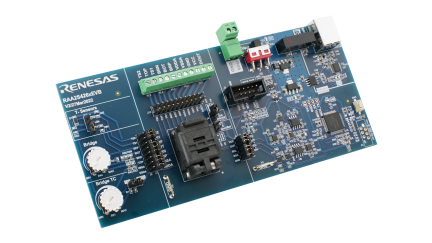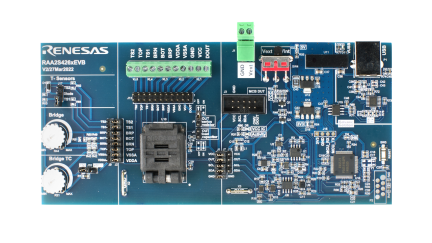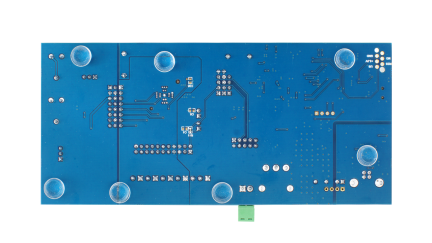Overview
Description
The RAA2S426XKIT evaluation board is designed to help users evaluate the performance of the RAA2S426x sensor. It features a comprehensive setup for power supply and connection to the Renesas IC Toolbox (RICBox) software, enabling easy configuration and data reading. The board supports temperature measurement, calibration, and data filtering. It also includes troubleshooting guidance for common issues.
A dedicated extension kit is available for each product variant (RAA2S4261EXT, RAA2S4262EXT, RAA2S4263EXT, RAA2S4264EXT, RAA2S4266EXT, and RAA2S4267EXT).
Features
- Comprehensive setup for power supply and connection to the RICBox software
- Supports temperature measurement, calibration, and data filtering
- Includes troubleshooting guidance for common issues
- Allows for the use of the RAA2S426xB devices without a real sensor by providing means for changing bridge resistance and using an onboard diode for temperature sensor
- Detachable sensor section for connecting to an actual sensor through diverse options
Applications
Documentation
|
|
|
|
|---|---|---|
| Type | Title | Date |
| Guide | PDF 5.38 MB | |
| Quick Start Guide | PDF 954 KB | |
2 items
|
||
Design & Development
Software & Tools
Software & Tools
| Software title
|
Software type
|
Company
|
|---|---|---|
| Renesas IC Toolbox (RICBox) The Renesas IC Toolbox (RICBox) software platform enables customers to configure Renesas devices on evaluation kits when attached to the computer running the software.
|
Software Package | Renesas |
1 item
|
||
Product Options
Applied Filters:
Videos & Training
The RAA2S426x are top-tier automotive sensor signal conditioners (SSCs) with SENT or I²C output, designed for precise amplification and correction of differential bridge sensor signals. The devices offer exceptional precision and reliability with outstanding analog pre-amplification and sensor offset correction, making them adaptable to nearly all resistive bridges.



